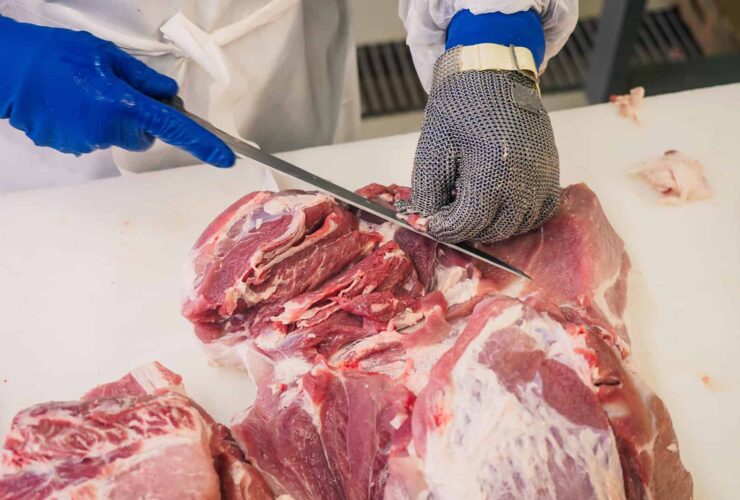Musculoskeletal disorders brought on by poor ergonomics are not the only category of employee injuries that cost time and money. A number of injuries in food processing plants can occur due to slips and falls brought on by wet or slick surfaces.
The floor of a food processing facility is typically exposed to all sorts of food byproducts, including fats, hot oils, blood, sugar solutions, and natural food acids. While these substances can themselves injure employees, they also increase the risk of accidents associated with wet or slick flooring and stairs. Failure to adequately clean up slicks and spills can result in immediate, serious injury.
High Risk for Slips
The most common risk areas for employee slips and falls include:
- Flooring
- Handrails
- Ladder Rungs
- Stair Treads
- Stair Noses
- Catwalks
- Mezzanines
- Drain Covers
Reduce the Risk
When exposed to food byproducts, these areas of a food processing plant become dangerously slick and raise the risk of employee injuries. While there is no way to completely eliminate injuries in your plant, there are ways to reduce the risk of slips and falls and protect yourself from costly employee injury.
Apply non-slip coating to stairs, ladders, and flooring
The application of a non-slip coating to stairs, ladders, and flooring will go a long way in reducing the risk of injuries from slips and falls. The non-slip coating creates a extreme surface hardness and provides traction even when covered in slick substances.
Keep floors and stairs clean, dry, and non-slippery
Proper and immediate cleaning of spilled product and substances will reduce the amount of slippery substance on the floor and reduce the risk of employee slips and falls. Clean floors and stairs are risk free floors and stairs.
Wear proper shoes with slip-resistant soles
Encourage your employees to wear shoes with slip-resistant soles. The extra traction will keep them safe even when walking over slippery substances.
Use clear warning signs for wet floors
Teach your employees the proper safety procedures when a substance is spilled — including placing warning signs near wet and slick areas. The extra warning will help employees walk extra careful in those areas.
Take defective ladders out of use until they are repaired or replaced
Ladders can be a tripping and falling hazard for employ
Replace burnt-out light bulbs and fluorescent tubes
Improper lighting can cause a tripping and falling hazard due to an employee’s inability to see wet and slick areas. Replacing burnt-out bulbs and fluorescent tubes as soon as possible will keep areas properly illuminated and reduce the risk of injury.
Get Yourself Covered
Applying non-slip coating to stairs, ladders, floors, handrails, and drain covers is the most effective way to reduce that risk. The extra bond created when surfaces are covered with non-slip coating gives employees extra traction, even if walking across wet and slick areas. Investing in non-slip coating is the greatest step you can take in keeping your employees safe from slips and falls.




